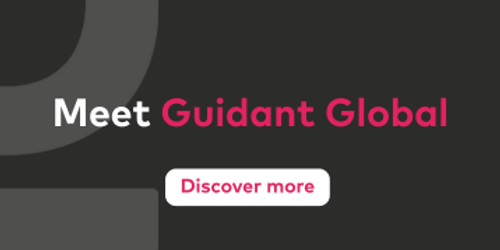

Author
Global Marketing Director
5 minutes
The future of AI in workforce management: Interview with SVP Technology, Pam Beard
For those who do not as yet know you, Pam, please introduce yourself?
I started in the MSP / staffing industry when many staffing firms kept CVs in filing cabinets and in fact spent the first few years of my career traveling from city to city advising newly acquired staffing firms on how to digitize CVs and adopt newer technology. Now, the technology that exists exceeds what even the wildest imaginations thought was possible. Today, my passion is around the adoption of new technology, including AI, to enable even greater advances in our industry.
What are the main ways that AI is being applied to workforce management?
AI has started to take a role in a number of areas within workforce management, with talent acquisition being one key area.
For example, AI can help someone to write an efficient, concise job description in a matter of a few minutes instead of laboring for a few hours trying to perfect the wording. We can work with a hiring manager who may only have a few key skills that they're looking for and use AI to craft a very full job description, have them review that, and then distribute via integration to many sources, very quickly.
Hiring managers can also use AI in recruitment to quickly summarize interviews they’ve done. If they've recorded that interview, they can use AI to review the transcript from it, summarize it, and pull out the key points. There are now platforms in the marketplace who provide even further insight via sentiment analysis of those recorded interviews.
When managers conduct interviews of multiple candidates, it can be hard to remember the uniqueness of each candidate, and using AI in recruitment, they're able to capture some of that and then evaluate the candidates fairly across all of the interviews.
We're also seeing AI being used in a more analytic perspective. Using Guidant Global as an example, we’re able to pull together data sources from lots of places to help advise our clients on new trends and opportunities.
We can consolidate external data sources and data we gather from our business and give direction to our clients. Without AI this might have been a time consuming and challenging task. Now we can do that very quickly - we were able to do this within just a day for a particular client – to meet their needs.
We can tell them what's happening for them in the marketplace on a macro scale, and what's happening in the labor market. We can pull those areas together and provide truly helpful suggestions and recommendations to a client.
What are some of the challenges and impacts of using AI in workforce management?
In 2023, AI was the word or phrase of the year. Everywhere you turned, every article you read, everybody was talking about AI, and they were doing it in a very generic way.
In 2025, we're starting to get down to more detail. How does a business use it? Where is an appropriate place for it within the grander scheme of the things that we do?
If you think about the different regional aspects of AI, you have the EU, who are perhaps the most regulated region. They’re putting guidelines around how AI is used in business to ensure that it's fairly used, especially within workforce management.
In addition, with usage of some specific AI platforms, all of the information that goes into the platform is available for public use/future contextual usage by the AI. How do people protect their privacy within that context?
The EU is trying to put some guidelines around this very point and is considering how businesses are using AI, whether it is safe and secure, and how robust those measures are.
In instances like a candidate wanting to contest how AI was used - perhaps in a hiring decision - all these items are to be sorted out yet, and here it goes to the ‘great unknown’ for AI. There are a lot of great minds working on it and it will continue to evolve over the next few years as more businesses bring it into each of those.
In comparison, if you look at the US, the US regulations are not yet established except for a few states. The Federal government is only now looking at specific guidelines that need to be in place, whereas before it had mostly been left to each state.
So, if you look at it on a global basis, at best you have a range of different regulations to navigate. At worst you have a total lack of regulations across the world.
For a global business there are clearly challenges in adapting AI in a way that meets regulations within the different regions but still maintains some consistency across their business.
I think as we progress into 2025, that will be one of the biggest challenges that we experience as well as respecting the privacy of the individual and ensuring that our decisions aren't all made by AI.
We're in the people business, and it's important that we use AI to support our business but not remove the human component and the relationships we have with each of our candidates, hiring managers, and clients.
Can you give us examples of the work that Guidant Global has been doing so far with AI and our clients?
We have mainly been using both AI and automation to look for areas where we can reduce the amount of manual work and gain efficiencies without compromising quality – to free up our people to focus on more strategic aspects. Additionally, we are finding ways that we can glean more data for practical use.
From an AI perspective, some of the tools that we use have the ability to take a few key skillsets and build an entire job description around that.
We're also able to use AI to assist in the comparison of a large number of CVs and help our teams to identify the top ten to fifteen most suitable candidates out of potentially hundreds or thousands. Then, completing the shortlisting of candidates and having them ready to review very quickly.
Pulling out the most relevant candidates shortens the initial process before you bring in the human component – people reviewing the shortlisted CVs and getting an idea of if they would be a great fit and why.
So, we're able to do the entire hiring process more quickly than we used to, shortening the time to fill and getting a suitable worker into the workforce very quickly, which can be invaluable to our clients.
How do you think AI can have a positive impact on social value as well as the world of business?
AI can help to make the workplace more accessible and accommodating for people with disabilities and additional needs, through assistive technologies such as speech-to-text/text-to-speech, captioning, and translation. There are already tools available, but these tools will only become stronger, more widely available, and easier to implement.
This is a win for so many people, not least of all organizations who would love to have a workplace that is more inclusive for people with disabilities. It enables them to achieve this in as seamless a way as possible – it becomes just a standard part of the recruitment, onboarding, and workforce management process.
What do you think is next for AI in workforce management?
To date, a lot of the AI that's come into the workplace has been point solutions. It's to help a particular process with its efficiency or with its accuracy. And as we think about that, it's fabulous. It drives efficiency within a business and more fairness into the business. As we look to the future, it will be the stringing together of those individual point solutions and really coming up with more macro support for the business that goes from step one to step two to step three.
I read recently about the application of AI and project management and right now the tools that are available can help craft a generic timeline and plug in some dates to that timeline.
If we think about what might be coming next, it's the ability to help identify where there might be hiccups in the implementation process based on historical bottlenecks and challenges.
If we think about implementing our programs for customers, there are some known and sometimes some unknown risks and the next generation of AI is going to be able to predict some of those known and unknown risks that might be coming. This will enable the project manager to plan for those and to keep things moving much more quickly as we think even further into the future.
AI will become more ‘agent like’ and able to do a lot of the coordination effort, which will enable project managers to focus on the relationships with managers; dealing with the people component, rather than spending all their time on the process documentation and pulling all of side of things together.
For candidates, I've often seen that people are afraid of what AI might do to their jobs. I believe that it's not that AI is going to replace people's jobs so much as it will be the people that adapt with AI and learn how to use AI and what they do with AI will be in most demand.
I think as 2025 progresses we will see increasingly that AI capability will be key to many white-collar jobs. That will be a big shift in the way that our existing and up-and-coming workforces are educated, learning to adapt and to use those tools as quickly as they're coming onto the job market.
Find out more
If you’re looking for ways to increase efficiency with AI and automation, get in touch with the team at Guidant Global to arrange a conversation.
Insights to drive workforce performance
Workforce insights in your inbox
Sign up for our newsletter with the latest workforce management news, insights, analysis and more.
Australia
Suite 1403, Level 14
309 Kent Street
Sydney
NSW 2000
United Kingdom
United States
27777 Franklin Road
Suite 600
Southfield
Michigan 48034









